Punctelia borreri (Sm.) Krog
Nord. J. Bot., 2: 291, 1982. Basionym: Lichen borreri Sm. - Engl. Bot., 25: 1780.
Synonyms: Imbricaria borreri (Sm.) Körb.; Parmelia borreri (Sm.) Turner; Parmelia borreri var. pseudoborreri (Asahina) Targé & Lambinon; Parmelia pseudoborreri Asahina
Distribution: N - VG (Leandrin 2004, 2006), Frl (Tretiach & Baruffo 2001, 2001b, Giordani & al. 2003b, Leandrin 2004, Thell & al. 2005, Tretiach & Molaro 2007), Ven (Caniglia & al. 1999, Leandrin 2004, Nascimbene 2005c, 2008, Nascimbene & Marini 2010, Nascimbene & al. 2015), TAA (Thell & al. 1998, Tretiach & al. 2003, Gottardini & al. 2004, Leandrin 2004, Thell & al. 2005, Nascimbene & al. 2007b, 2022, Nimis & al. 2015), Lomb (Tretiach & al. 2003, Leandrin 2004, Furlanetto 2010), Piem (Valcuvia 2002, 2002b, Leandrin 2004, Furlanetto 2010, Matteucci & al. 2010), Emil (Tretiach & al. 2003, Leandrin 2004, Fariselli & al. 2020, Fariselli 2022), Lig (Leandrin 2004, Giordani 2006, Giordani & Incerti 2008). C - Tosc (Loppi & Putortì 1995, 1995b, Loppi 1996, Loppi & De Dominicis 1996, Loppi & al. 1996, 1999a, 2004c, Putortì & al. 1998, Bacci & al. 2000, Senese & Critelli 2000, Leandrin 2004, Paoli & Loppi 2008, Brunialti & Frati 2010, Paoli & al. 2012, 2012b, 2013, 2015d, Benesperi & al. 2013, Winkler & al. 2013, Nascimbene & al. 2015, Fačkovcová & al. 2024), Marc (Tretiach & al. 2003, Frati & al. 2004, Leandrin 2004, Frati & Brunialti 2006), Umb (Ravera 1998, Panfili 2000b, Leandrin 2004, Ravera & al. 2006, Ciotti & al. 2009), Laz (Bartoli & al. 1997, Ravera & al. 2003, Massari & Ravera 2002, Leandrin 2004, Ruisi & al. 2005, Munzi & al. 2007, Ravera 2008b, Ravera & Genovesi 2008, Zucconi & al. 2013), Abr (Recchia & Villa 1996, Thell & al. 2002, 2004, 2005, Gheza & al. 2021), Mol (Frati & al. 2004, Caporale & al. 2008, Paoli & al. 2015, Caporale & Ravera 2020), Sar (Zedda 2002, 2002b, Leandrin 2004, Leandrin 2006, Neuwirth 2018). S - Camp (Ricciardi & al. 2000, Aprile & al. 2002, Nimis & Tretiach 2004, Leandrin 2004, Garofalo & al. 2010, Catalano & al. 2016), Pugl (Tretiach & al. 2003, Leandrin 2004), Bas (Tretiach & al. 2003, Cassola & al. 2025), Cal (Tretiach & al. 2003, Leandrin 2004), Si (Tretiach & al. 2003, Leandrin 2004).
Description: Thallus foliose, heteromerous, dorsiventral, forming 5-10 cm wide rosettes, sorediate. Lobes tightly adpressed, 5-10 mm wide, rounded and ascending at apices, eciliate, grey, with numerous punctiform, white pseudocyphellae giving rise to orbicular, up to 0.7 mm wide, laminal, white soralia. Lower surface black in central part, dark brown at margins, with simple rhizines which become more sparse at margins. Upper cortex paraplectenchymatous, of 2-6 layers of densely packed cells, with a non-pored epicortex, the cell walls with isolichenan; algal layer continuous; medulla white; lower cortex paraplectenchymatous. Apothecia very rare, lecanorine, with a brown disc and an often sorediate thalline margin. Proper exciple thin, colourless; epithecium brownish; hymenium and hypothecium colourless. Asci 8-spored,clavate, Lecanora-type. Ascospores 1-celled, hyaline, broadly ellipsoid, 15-18 x 12-15 µm. Pycnidia black, laminal. Conidia short-filiform, 5-7 x 1 µm. Photobiont chlorococcoid. Spot tests: upper cortex K+ yellow, C-, KC-, P- or P+ very faintly yellow; medulla K-, C+ pink, KC+ pink, P-, UV-. Chemistry: upper cortex with atranorin and chloroatranorin; medulla with gyrophoric acid (major) and fatty acids. Note: a mainly mild-temperate lichen found on more or less isolated, mostly deciduous trees; perhaps more frequent in Tyrrhenian Italy and in rainy-humid areas than P. subrudecta.
Growth form: Foliose, broad lobed
Substrata: bark
Photobiont: green algae other than Trentepohlia
Reproductive strategy: mainly asexual, by soredia, or soredia-like structures (e.g. blastidia)
Most common in areas with a humid-warm climate (e.g. most of Tyrrenian Italy)
Commonnes-rarity: (info)
Alpine belt: absent
Subalpine belt: absent
Oromediterranean belt: absent
Montane belt: extremely rare
Submediterranean belt: rare
Padanian area: extremely rare
Humid submediterranean belt: rather rare
Humid mediterranean belt: rare
Dry mediterranean belt: absent
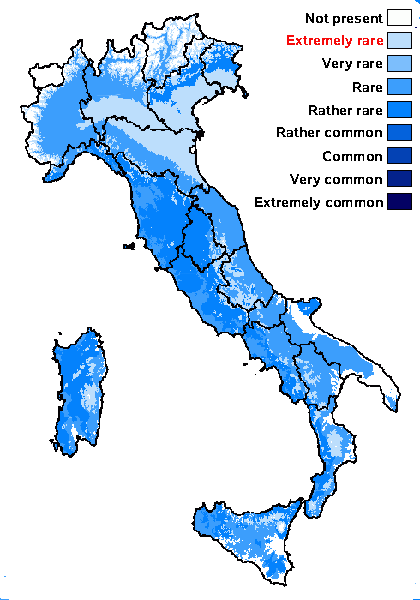
Predictive model
Herbarium samples
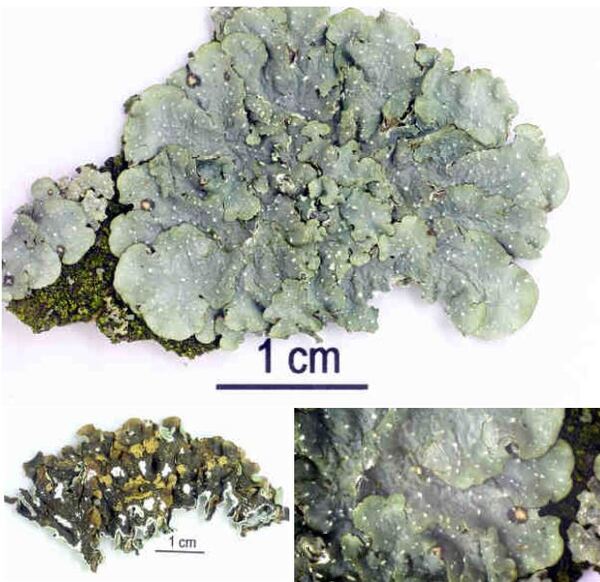

Felix Schumm – CC BY-SA 4.0
Image from: F. Schumm (2008) - Flechten Madeiras, der Kanaren und Azoren. Beck, OHG - ISBN: 978-3-00-023700-3
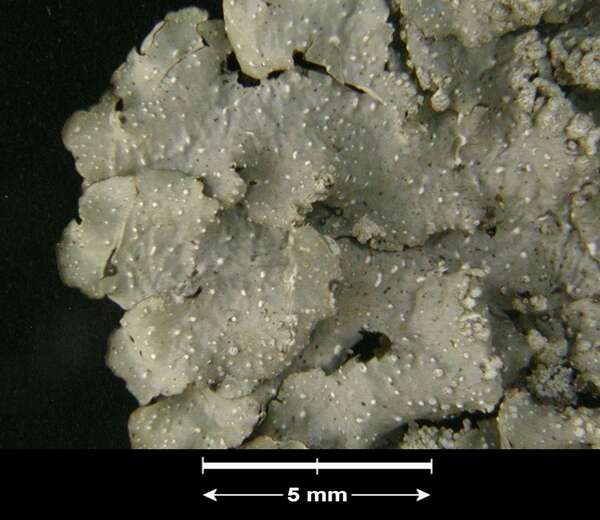

G. Incerti; Owner: Department of Life Sciences, University of Trieste
Herbarium: TSB (31368)
2001/11/26


Felix Schumm - CC BY-SA 4.0
[19225], Australia, New South Wales, 36 km east-south-east of Cooma along the Countegany-Kybean road, 36°19' S, 149°30 'E, 1000 m, growing on trunks of old Populus nigra var. italica in pasture land. Leg. J.A. Elix (11451) & H. Streimann, 15.11.1983. Lich. Australasici Exs. No. 072.
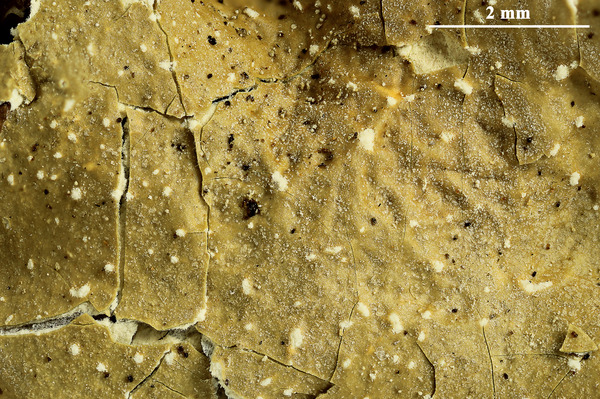

Felix Schumm - CC BY-SA 4.0
[19225], Australia, New South Wales, 36 km east-south-east of Cooma along the Countegany-Kybean road, 36°19' S, 149°30 'E, 1000 m, growing on trunks of old Populus nigra var. italica in pasture land. Leg. J.A. Elix (11451) & H. Streimann, 15.11.1983. Lich. Australasici Exs. No. 072.
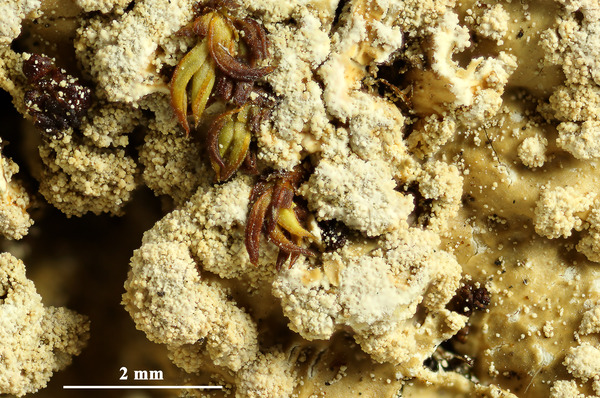

Felix Schumm - CC BY-SA 4.0
[19225], Australia, New South Wales, 36 km east-south-east of Cooma along the Countegany-Kybean road, 36°19' S, 149°30 'E, 1000 m, growing on trunks of old Populus nigra var. italica in pasture land. Leg. J.A. Elix (11451) & H. Streimann, 15.11.1983. Lich. Australasici Exs. No. 072.


G. Incerti; Owner: Department of Life Sciences, University of Trieste
Herbarium: TSB (31368)
2001/11/26
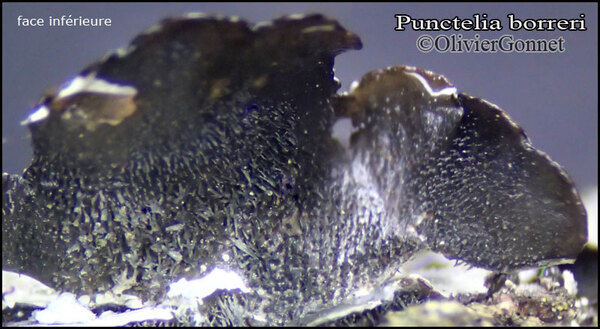
Courtesy Danièle et Olivier Gonnet - Source: https://www.afl-lichenologie.fr/Photos_AFL/Photos_AFL_P/Punctelia_borreri.htm
France
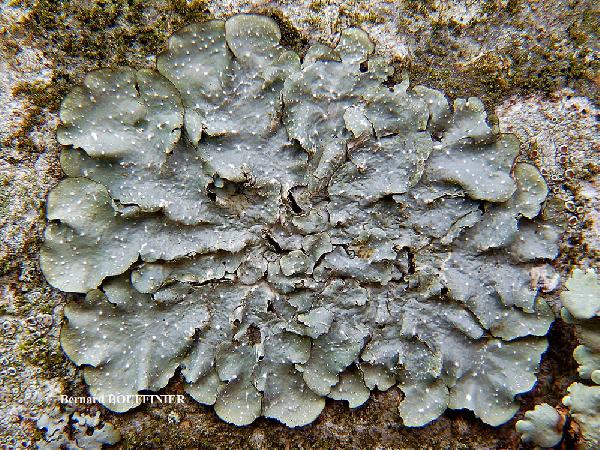
Bernard Bouffinier - Source: http://www.lichensmaritimes.org/index.php?task=fiche&lichen=423&lang=en
France, Châteaulin
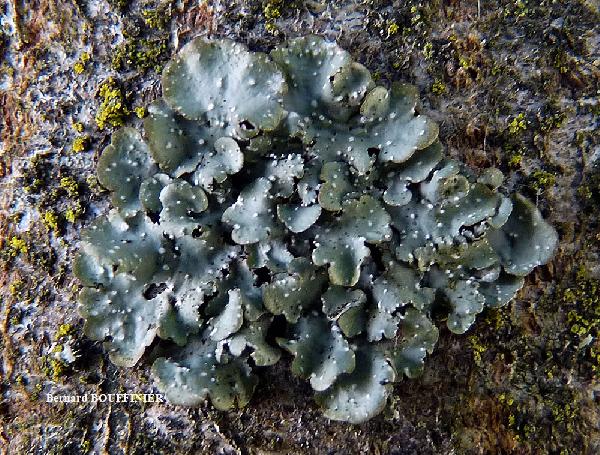
Bernard Bouffinier - Source: http://www.lichensmaritimes.org/index.php?task=fiche&lichen=423&lang=en
France, Châteaulin
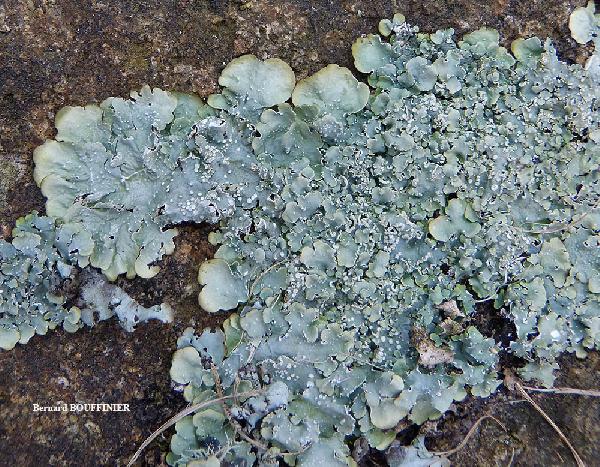
Bernard Bouffinier - Source: http://www.lichensmaritimes.org/index.php?task=fiche&lichen=423&lang=en
France, Hôpital-Camfrout
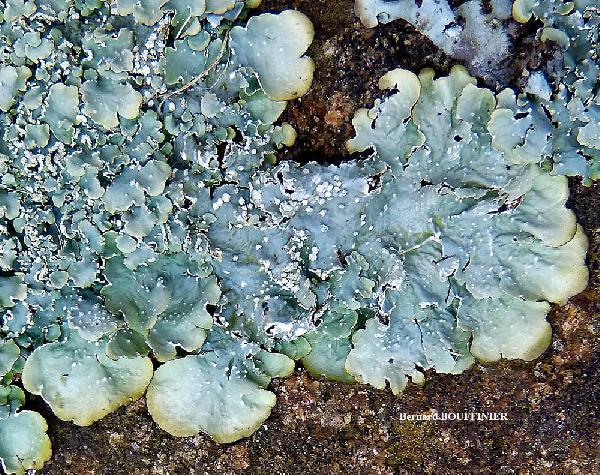
Bernard Bouffinier - Source: http://www.lichensmaritimes.org/index.php?task=fiche&lichen=423&lang=en
France, Hôpital-Camfrout
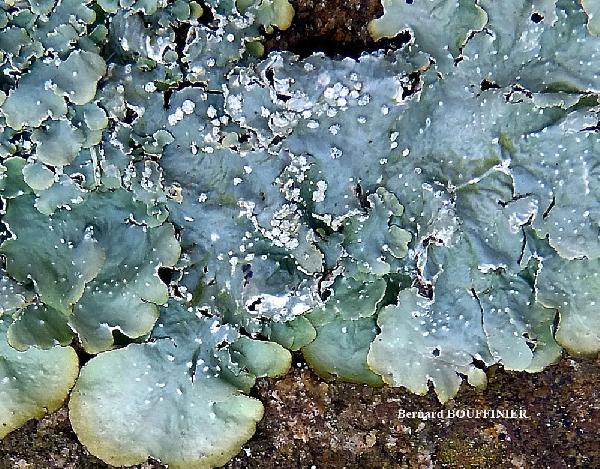
Bernard Bouffinier - Source: http://www.lichensmaritimes.org/index.php?task=fiche&lichen=423&lang=en
France, Hôpital-Camfrout
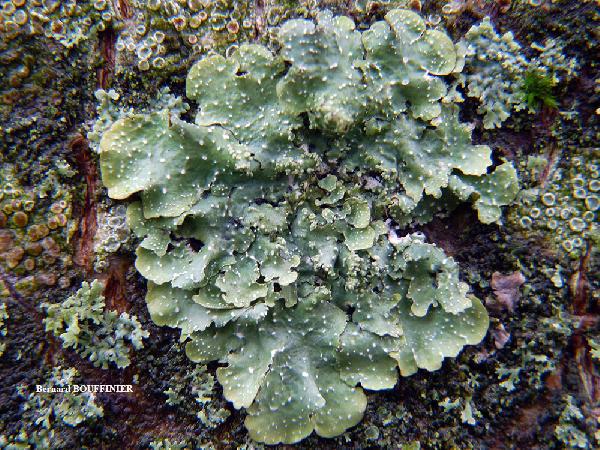
Bernard Bouffinier - Source: http://www.lichensmaritimes.org/index.php?task=fiche&lichen=423&lang=en
France, Sainte Marie, Menez Hom

Jacques Haine - Source: http://www.lichensmaritimes.org/index.php?task=fiche&lichen=423&lang=en
France, Aix en Provence
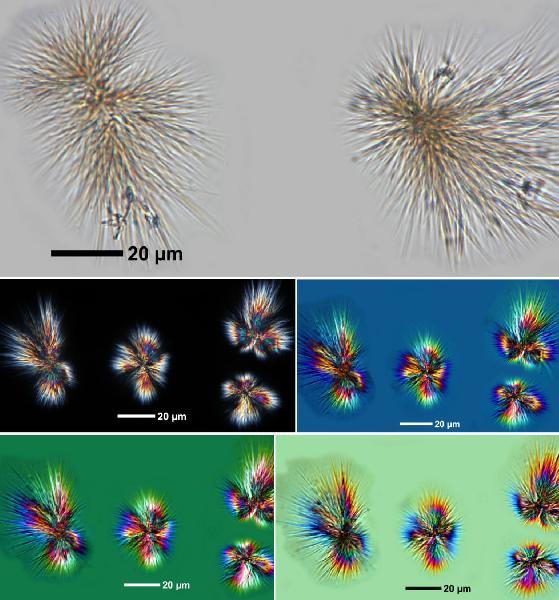

Felix Schumm - CC BY-SA 4.0
Gyrophoric acid -Gyrophoric acid Aufkochen in GE (Glycerin + Eisessig 2:1), 1 Stunde warten, beobachten mit Obj. 60 x Quelle: Punctelia borreri (Sm.) Turner [12632], Germany, NRW, Düsseldorf Benrath, Wald Demagstraße, an Linde. ca. 42 m; leg. Stapper 07.09.2006
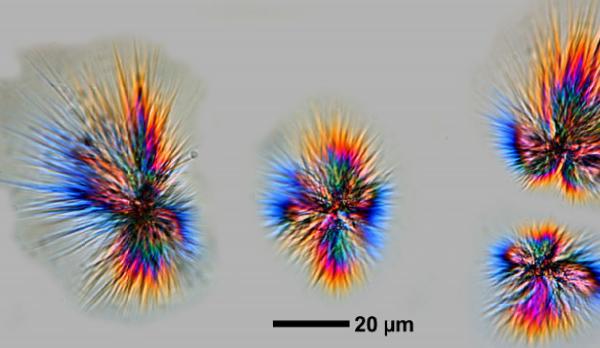

Felix Schumm - CC BY-SA 4.0
Gyrophoric acid - Aufkochen in GE (Glycerin + Eisessig 2:1), 1 Stunde warten, beobachten mit Obj. 60 x Quelle: Punctelia borreri (Sm.) Turner [12632], Germany, NRW, Düsseldorf Benrath, Wald Demagstraße, an Linde. ca. 42 m; leg. Stapper 07.09.2006
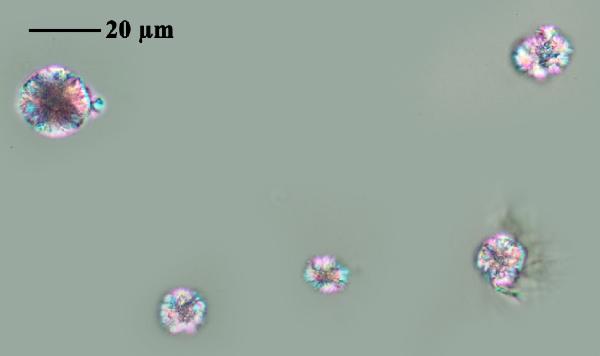

Felix Schumm - CC BY-SA 4.0
Gyrophoric acid
Erwärmen in GE, 10 Stunde warten, beobachtet mit Obj. 40 x
Quelle: Acetonextrakt von
Punctelia borreri (Sm.) Krog, [19225], Australia, New South Wales, 36
km east-south-east of Cooma along the Countegany-Kybean road,
36°19' S, 149°30 'E, 1000, growing on trunks of old Populus nigra var.
italica in psture land. Leg. J.A. Elix (11451) & H. Streimann,
15.11.1983. Chemistry: atranorin, gyrophoric, ursolic acids. LICHENES
AUSTRALASICI EXSICCATI NO. 072. p316/5: gyrophoric, atranorin (tr),
orcenyl lecanorate (lit. Elix).
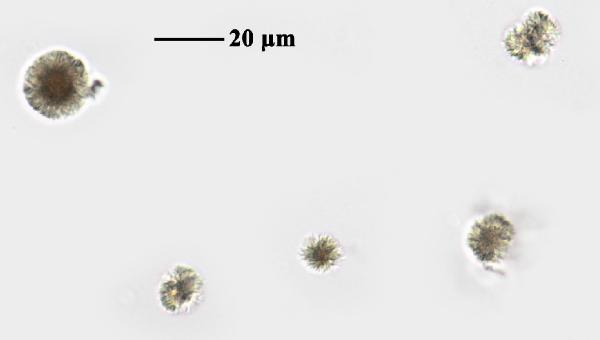

Felix Schumm - CC BY-SA 4.0
Gyrophoric acid
Erwärmen in GE, 10 Stunde warten, beobachtet mit Obj. 40 x
Quelle: Acetonextrakt von
Punctelia borreri (Sm.) Krog, [19225], Australia, New South Wales, 36
km east-south-east of Cooma along the Countegany-Kybean road,
36°19' S, 149°30 'E, 1000, growing on trunks of old Populus nigra var.
italica in psture land. Leg. J.A. Elix (11451) & H. Streimann,
15.11.1983. Chemistry: atranorin, gyrophoric, ursolic acids. LICHENES
AUSTRALASICI EXSICCATI NO. 072. p316/5: gyrophoric, atranorin (tr),
orcenyl lecanorate (lit. Elix).
Growth form: Foliose, broad lobed
Substrata: bark
Photobiont: green algae other than Trentepohlia
Reproductive strategy: mainly asexual, by soredia, or soredia-like structures (e.g. blastidia)
Most common in areas with a humid-warm climate (e.g. most of Tyrrenian Italy)
Commonnes-rarity: (info)
Alpine belt: absent
Subalpine belt: absent
Oromediterranean belt: absent
Montane belt: extremely rare
Submediterranean belt: rare
Padanian area: extremely rare
Humid submediterranean belt: rather rare
Humid mediterranean belt: rare
Dry mediterranean belt: absent

Predictive model
| Herbarium samples |


Felix Schumm – CC BY-SA 4.0
Image from: F. Schumm (2008) - Flechten Madeiras, der Kanaren und Azoren. Beck, OHG - ISBN: 978-3-00-023700-3


G. Incerti; Owner: Department of Life Sciences, University of Trieste
Herbarium: TSB (31368)
2001/11/26


Felix Schumm - CC BY-SA 4.0
[19225], Australia, New South Wales, 36 km east-south-east of Cooma along the Countegany-Kybean road, 36°19' S, 149°30 'E, 1000 m, growing on trunks of old Populus nigra var. italica in pasture land. Leg. J.A. Elix (11451) & H. Streimann, 15.11.1983. Lich. Australasici Exs. No. 072.


Felix Schumm - CC BY-SA 4.0
[19225], Australia, New South Wales, 36 km east-south-east of Cooma along the Countegany-Kybean road, 36°19' S, 149°30 'E, 1000 m, growing on trunks of old Populus nigra var. italica in pasture land. Leg. J.A. Elix (11451) & H. Streimann, 15.11.1983. Lich. Australasici Exs. No. 072.


Felix Schumm - CC BY-SA 4.0
[19225], Australia, New South Wales, 36 km east-south-east of Cooma along the Countegany-Kybean road, 36°19' S, 149°30 'E, 1000 m, growing on trunks of old Populus nigra var. italica in pasture land. Leg. J.A. Elix (11451) & H. Streimann, 15.11.1983. Lich. Australasici Exs. No. 072.


G. Incerti; Owner: Department of Life Sciences, University of Trieste
Herbarium: TSB (31368)
2001/11/26

Courtesy Danièle et Olivier Gonnet - Source: https://www.afl-lichenologie.fr/Photos_AFL/Photos_AFL_P/Punctelia_borreri.htm
France

Bernard Bouffinier - Source: http://www.lichensmaritimes.org/index.php?task=fiche&lichen=423&lang=en
France, Châteaulin

Bernard Bouffinier - Source: http://www.lichensmaritimes.org/index.php?task=fiche&lichen=423&lang=en
France, Châteaulin

Bernard Bouffinier - Source: http://www.lichensmaritimes.org/index.php?task=fiche&lichen=423&lang=en
France, Hôpital-Camfrout

Bernard Bouffinier - Source: http://www.lichensmaritimes.org/index.php?task=fiche&lichen=423&lang=en
France, Hôpital-Camfrout

Bernard Bouffinier - Source: http://www.lichensmaritimes.org/index.php?task=fiche&lichen=423&lang=en
France, Hôpital-Camfrout

Bernard Bouffinier - Source: http://www.lichensmaritimes.org/index.php?task=fiche&lichen=423&lang=en
France, Sainte Marie, Menez Hom

Jacques Haine - Source: http://www.lichensmaritimes.org/index.php?task=fiche&lichen=423&lang=en
France, Aix en Provence


Felix Schumm - CC BY-SA 4.0
Gyrophoric acid -Gyrophoric acid Aufkochen in GE (Glycerin + Eisessig 2:1), 1 Stunde warten, beobachten mit Obj. 60 x Quelle: Punctelia borreri (Sm.) Turner [12632], Germany, NRW, Düsseldorf Benrath, Wald Demagstraße, an Linde. ca. 42 m; leg. Stapper 07.09.2006


Felix Schumm - CC BY-SA 4.0
Gyrophoric acid - Aufkochen in GE (Glycerin + Eisessig 2:1), 1 Stunde warten, beobachten mit Obj. 60 x Quelle: Punctelia borreri (Sm.) Turner [12632], Germany, NRW, Düsseldorf Benrath, Wald Demagstraße, an Linde. ca. 42 m; leg. Stapper 07.09.2006


Felix Schumm - CC BY-SA 4.0
Gyrophoric acid Erwärmen in GE, 10 Stunde warten, beobachtet mit Obj. 40 x Quelle: Acetonextrakt von Punctelia borreri (Sm.) Krog, [19225], Australia, New South Wales, 36 km east-south-east of Cooma along the Countegany-Kybean road, 36°19' S, 149°30 'E, 1000, growing on trunks of old Populus nigra var. italica in psture land. Leg. J.A. Elix (11451) & H. Streimann, 15.11.1983. Chemistry: atranorin, gyrophoric, ursolic acids. LICHENES AUSTRALASICI EXSICCATI NO. 072. p316/5: gyrophoric, atranorin (tr), orcenyl lecanorate (lit. Elix).


 INDEX FUNGORUM
INDEX FUNGORUM
 GBIF
GBIF
 DOLICHENS
DOLICHENS

